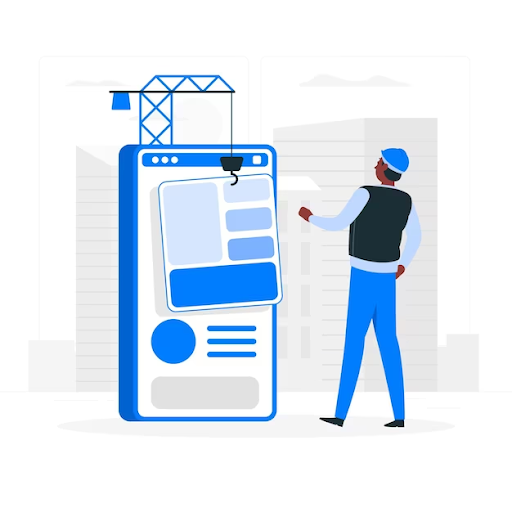Mobile App Architecture: A Guide to Design and Build Scalable Apps
 Lucas Lagone
Lucas Lagone
With the rapid advancement of digital technology in our modern era, mobile applications have become an integral part of our daily lives. From swiftly ordering meals and reserving rides to effortlessly staying in touch with loved ones, mobile apps have revolutionized these experiences with the convenience of a mere tap on our smartphones. Yet, beneath this flawless user interface lies a meticulously designed mobile app architecture, carefully crafted to ensure optimal performance.
The use of mobile apps continues to increase, driven by the global pandemic and changing user preferences. According to the Mobile App Trends 2023 report, app installs grew by 31% compared to the previous year, and user engagement measured by sessions increased by 4.5%. Google Play store has 3.48 million apps accessible; the Apple App Store only has about 2.22 million.
What is Mobile App Architecture?
Mobile App architecture refers to a range of technologies and models utilized in creating meticulously structured mobile programs that adhere to industry and vendor-specific standards. It is important to identify the compatibility of your mobile app architecture with wireless devices like mobile and tablets. This helps in making the process of designing the architecture easy.
Companies offering mobile app development services need to find out the goals, needs, and compatibility of the mobile app they need to design before working on it. The design of mobile app architecture typically involves multiple layers:
Presentation Layer
This layer encompasses user interface (UI) components and the relevant processing components.
Business Layer
The business layer consists of workflows, business entities, and various components.
Data Layer
Within this layer, you will find data utilities, data access components, and service agents.
It is essential to carefully consider these layers while designing the architecture of your mobile app to ensure its effectiveness and efficiency.
How Important UX Design Is?
It's critical to comprehend the significance of User Experience (UX) design in mobile app architecture. Giving consumers a simple and enjoyable experience is the aim of user experience design. User interface (UI) design, usability, accessibility, and general user happiness are some of the components involved in this. Mobile app architecture and UX design are closely related since a well-designed app may dramatically enhance user experience.
Key Components of Mobile App Architecture
Below mentioned are the key components of mobile app architecture for a successful mobile application.
Presentation Layer
The presentation layer of a mobile app is responsible for creating the user interface and experience. Its main purpose is to design intuitive and visually appealing elements such as buttons, menus, and screens. The involvement of UX designers is vital in molding this layer to ensure optimal user engagement.
Business Logic Layer
Within the mobile app architecture, the business logic layer houses the app's core functionality. It handles various tasks, such as processing user inputs, performing calculations, and managing data. Separating this layer from the presentation layer is crucial for achieving scalability. By keeping them distinct, any changes or updates can be made easily without impacting the user interface.
Data Layers
The data layer oversees the storage, retrieval, and manipulation of data within the application. It encompasses databases, APIs, and data caching mechanisms. Highly scalable applications typically rely on databases that efficiently accommodate massive data volumes.
Integration Layer
Often, mobile apps necessitate communication with external services, APIs, or third-party components. The integration layer simplifies these interactions, guaranteeing smooth communication between the app and external resources.
Investigating Design Patterns for Scalable Mobile App Architecture
Developers frequently use well-known design patterns to help them make decisions when they start the process of creating a mobile app architecture.
The Model-View-Controller, or MVC
Using the MVC Model-View-Controller design to divide an application into three different crucial components is very useful in a way. The Model manages data and business logic, the View handles the user interface, and the Controller controls user input. This division allows for clear separation of concerns and promotes greater code organization and reusability. This partitioning helps in fostering a well-organized and clean codebase.
MVVM (Model-View-ViewModel)
The MVVM pattern, which is an extension of the MVC architecture, emphasizes the need to separate the user interface from the business logic. By introducing ViewModels, we can effectively manage the presentation logic independently. This allows for smooth updates to the UI without affecting the underlying data.
Clean Architecture
Clean Architecture advocates for segregating the application into distinct layers, each possessing specific responsibilities, in order to establish a clear separation of concerns. Organizing dependencies to flow inward facilitates effortless testing and modification of individual components.
Microservices
Microservices architecture proves advantageous for highly scalable applications. This approach entails breaking down the application into independent and smaller services, allowing them to be developed, deployed, and scaled autonomously. Embracing this method can substantially enhance performance and scalability.
What Constitutes an Effective Architecture for Mobile Apps?
In the present scenario, numerous apps are being developed without incorporating any architecture or adhering to established standards. This lack of architecture leads to several drawbacks in the app's functionality, including.
Increased Development Time and Costs
The absence of a proper architecture necessitates more time and resources for app development.
Difficulty in Maintenance
Particularly when there are staff changes, apps without architecture become challenging to maintain.
Limited Scalability
Apps lacking architecture pose difficulties in expanding or scaling up their functionalities in the future.
Testing Complexities
The absence of a well-defined architecture makes it harder to perform effective testing of the app.
Higher Error Susceptibility
Applications developed without a structured architecture are more prone to encountering errors.
The Significance of Mobile App Development Services
A profound understanding and ample experience are imperative for constructing a scalable mobile app with a strong framework. This is precisely why mobile app development services play a pivotal role. A dedicated mobile app development company excels in fashioning exceptional applications that not only fulfill your specifications but also align with the finest standards prevailing in the industry.
Conclusion
The success of any mobile application heavily relies on the Mobile App Architecture. This architecture serves as an important element for creating a seamless and expandable user experience. Partnering with professional mobile app development services can greatly aid in the design and implementation of the ideal app architecture.
Keep in mind that a well-organized mobile app emphasizing exceptional UX design can result in heightened user satisfaction and, ultimately, triumph in the fiercely competitive realm of mobile apps. By employing appropriate architecture and development services, you can construct an app that not only caters to your immediate requirements but also adapts and grows alongside your expanding user base.
Subscribe to my newsletter
Read articles from Lucas Lagone directly inside your inbox. Subscribe to the newsletter, and don't miss out.
Written by

Lucas Lagone
Lucas Lagone
tech consultant at a leading web and mobile app development company.